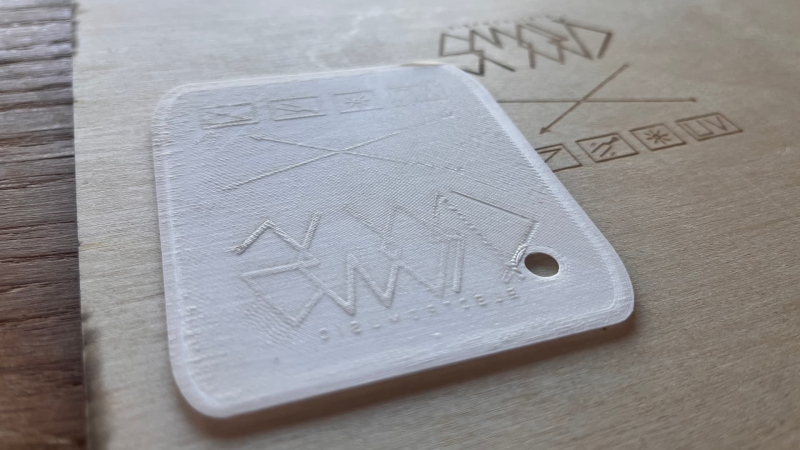Embossing (making raised shapes) and debossing (making sunken shapes) on 3D-printed surfaces is not a new idea; we do it all the time. [Cory] from Vancouver Hack Space was playing around with 3D printing on wood, and came up with the idea of creating raised tactile surfaces using a simple transfer process.
We don’t often try to print directly onto a wooden surface for various reasons, but [Cory] wanted to give it a go. They hoped to get some grain patterns to transfer to the surface, but as they say in the blog entry, the beauty of wood patterns is in the colouration, which doesn’t transfer. Next, they laser etched a logo into the wood surface to see how well that would transfer. It did create a discernable raised impression, but they forgot to mirror the image (oops!) and relevel the bed, so the results are less impressive than they could be. Still, it’s another useful technique to consider.
Embossing is the process by which braille sheets are made. This DIY braille encoder is pretty sweet. Of course, the process can simply be decorative. Here’s how to use a laser cutter to create your own embossing seals. The traditional way to emboss paper for a fancy effect was to use embossing powder to selectively change the properties of drying paper. But how can you make the stuff for cheap?
















Uhm. Speaking as a letterpress operator, the traditional way to emboss paper was to apply pressure…
Sure, there’s a few ways to do it. There reference to embossing powder is yet another way to distort paper that has been wetted.
Except that the operative word was “traditional”. Pretty certain that pressure predated powder by centuries.
Exactly. A quibble, but a significant one.
Note too debossing powder, which was adhere to paper by dusting it over wet ink, and was then heated to flow into a continuous transparent surface over those areas, raised slightly above the paper. I’m not certain offhand what the composition was. I’m sure it could be looked up.
What’s a couple centuries between friends? Considering the install timeline of the earth it is pretty insignificant
Paint (or ink) washes and dry-brushing would work well on that “boring” monochrome woodgrain.
I remember when we actually had to research and model the brails. I modeled brails and text scrabble pieces and boy that was a BITCH! Still a bit salty I lost that competition…
“Hi, Clippy here, it looks like you’re trying to [reinvent injection molding], can I help with that?” (humorous sarcasm)
I would simply laser etch a sheet of G-10 with whatever you want to transfer to your print, it’s already the best all around print surface in my opinion and far more durable than printing on wood.
I wouldn’t breath the fumes while etching the epoxy impregnated fiberglass sheet however and admit I’ve never tried it, but the FR4 variant is fire resistant so that’s what I would use.